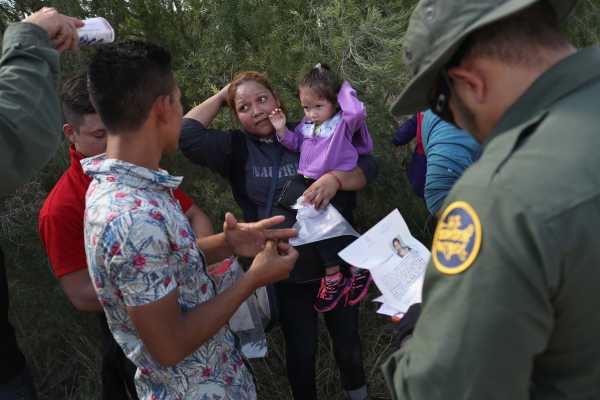
Nightmarish stories of children being ripped directly from their parents’ arms on the US-Mexico border have been emerging since May, when the Trump administration officially announced a “zero-tolerance” policy on people crossing into the US illegally, even if they are seeking asylum.
But one of the most horrifying tales of family separation came this week in a CNN report of an undocumented migrant from Honduras whose daughter was taken away by federal immigration agents while she was breastfeeding in a detention center. When the mother tried to resist arrest, she was handcuffed, according to her lawyer Natalia Cornelio.
A series of tweets from science journalist Emily Dreyfuss poignantly captured the unique brutality of ripping a child from its mother’s breast:
Dreyfuss explains that the anguish a mother would feel having her child taken away from her breast isn’t just emotional; it’s physical too. And there’s some very good science that can help explain why this act is particularly cruel.
The powerful “oxytocin reflex”
There are two hormones that are directly involved in breastfeeding, and one of them is oxytocin, the feel-good hormone.
“[A] baby crying induces oxytocin release, which causes breast milk production and release,” explained George Saade, director of the maternal-fetal medicine division at the University of Texas Medical Branch.
Breasts full of milk can be painful. Latching can also be painful, especially in the early days and months after the baby’s birth. But when a baby suckles a mom’s breasts, the mother’s brain’s posterior lobe secretes oxytocin, and some of that pain is relieved with the release of milk.
This is referred to as the “oxytocin reflex” or the “milk ejection reflex” — and it’s commonly accompanied by a tingling sensation in the breasts and milk flowing out, just before or during a feeding.
“The reflex becomes conditioned to the mother’s sensations and feelings, such as touching, smelling or seeing her baby, or hearing her baby cry, or thinking lovingly about him or her,” according to a World Health Organization report on mother-child feeding.
Separating moms and infants is risky to their health
In the breastfeeding stage, the baby’s suckling reflexes are also highly attuned, as Dreyfuss noted. “When your baby is latched to you, they are latched hard. That’s their job, to clamp down as hard as they can and suck as hard as they can to survive,” she wrote.
Indeed, when something touches a baby’s palate, he or she starts to suck it, and oxytocin comes in here too, the WHO said: “The oxytocin reflex makes the breast milk flow along the ducts, and the action of the baby’s tongue presses the milk from the ducts into the baby’s mouth.”
That’s why when a baby is attached to the mother’s breast, it’s essential to break the suction — typically with a pinky finger — before trying to remove the baby, explained Alison Stuebe, a professor of obstetrics and gynecology at University of North Carolina School of Medicine. “Simply pulling the baby off will traumatize the mother’s nipple,” she added.
There are other risks associated with splitting a mom from her baby at this vulnerable time. “A woman’s breasts are continuously making milk,” Stuebe said, “ and if that milk is not removed, her breasts become swollen and painful. She can develop mastitis, and mastitis can evolve into a breast abscess that may require surgical drainage.”
Since October, more than 700 children have been separated from their families
This highly refined and intricate system of hormones during breastfeeding is essential to keeping moms and babies healthy, and “it explains why the mother and baby should be kept together and why they should have skin-to-skin contact,” the WHO explained.
It also helps explain why the story of the Honduran migrant is so inhumane.
According to the New York Times, more than 700 children have been taken from adults who claim to be their parents since last October. More than 100 of them were under the age of 4.
As Vox’s Dara Lind explained, this has prompted “Families Belong Together” rallies across the US. “Which is more humane? To take a child from her parent, keep her in a temporary “tent” for a few days or weeks, and then place her with a relative? Or to keep child and parent together, in detention, for months or years?” Lind wrote. “Most of the administration’s critics would probably answer that the only humane option is to release the whole family together and find another way to monitor their cases to make sure they show up for their court dates. But that is the one option the administration refuses to put back on the table.”
Sourse: breakingnews.ie
0.00 (0%) 0 votes


































